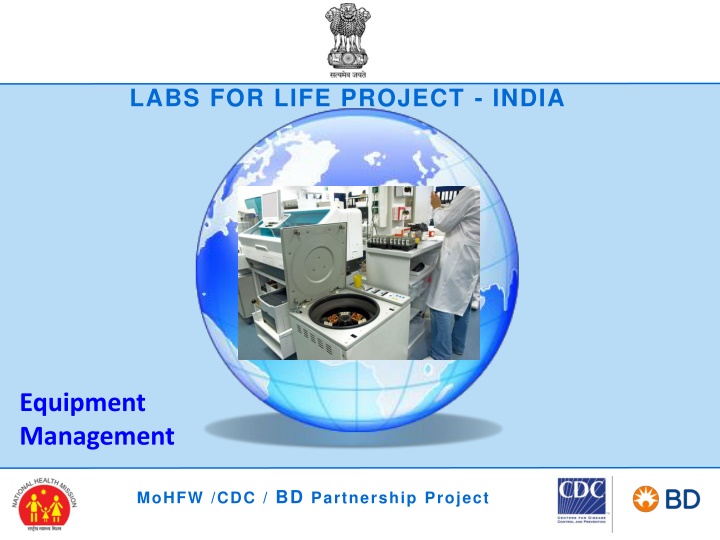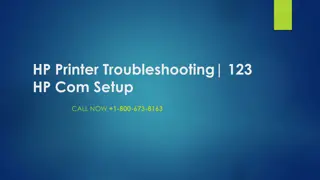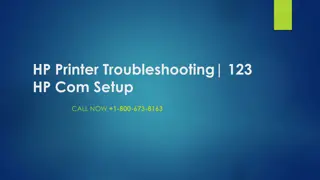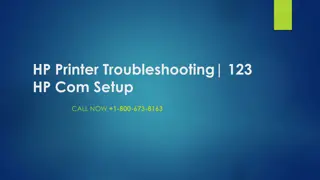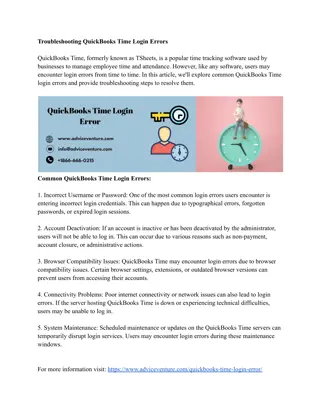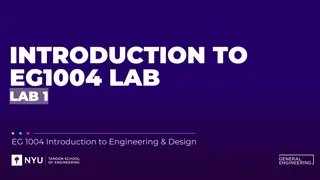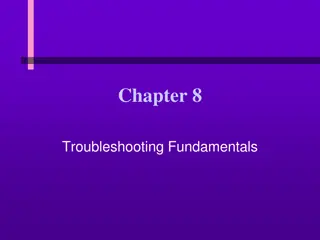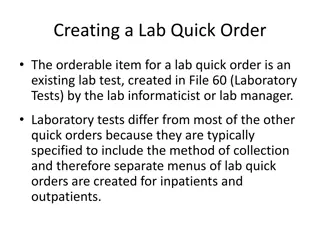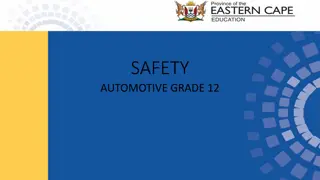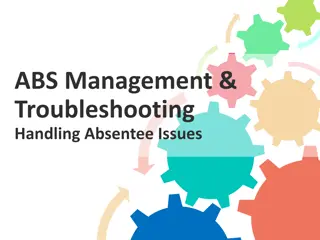Equipment Troubleshooting Guidelines for Efficient Lab Operations
Teach operators to troubleshoot equipment issues efficiently to minimize downtime and maintain testing productivity. Utilize preventive maintenance procedures and manufacturer-provided resources to identify and resolve problems. Explore alternative testing methods or backup instruments when necessary. Establish clear communication channels with manufacturers for effective troubleshooting support.
Download Presentation

Please find below an Image/Link to download the presentation.
The content on the website is provided AS IS for your information and personal use only. It may not be sold, licensed, or shared on other websites without obtaining consent from the author.If you encounter any issues during the download, it is possible that the publisher has removed the file from their server.
You are allowed to download the files provided on this website for personal or commercial use, subject to the condition that they are used lawfully. All files are the property of their respective owners.
The content on the website is provided AS IS for your information and personal use only. It may not be sold, licensed, or shared on other websites without obtaining consent from the author.
E N D
Presentation Transcript
LABS FOR LIFE PROJECT - INDIA Equipment Management MoHFW /CDC / BD Partnership Project
Trouble shooting Determining the source and cause of the problem It is important to teach operators to troubleshoot equipment problems in order to quickly get the equipment functioning and resume testing as rapidly as possible. When an operator observes instrument drift, it is important to repeat the preventive maintenance procedures as a first step to resolve the problem. If this does not work, proceed with troubleshooting
Troubleshooting Manufacturers frequently provide a flowchart that can help determine the source of problems.
Troubleshooting When problems cannot be corrected in-house, attempt to find a way to continue testing until the equipment can be repaired. Some ways to achieve this are as follows: Arrange to have access to back-up instruments Ask the manufacturer to provide a replacement instrument during repairs. Send the samples to a nearby quality assured laboratory for testing.
Troubleshooting Flags It must be clarified by the manufacturer/supplier during training as to what instrument flags and alerts should the lab personnel watch out for. Also, it should be clearly known to what extent/step the equipment troubleshooting can be done by the lab personnel and which snags are to be addressed by the manufacturer only. The manufacturer must provide single point of contact/helpline for troubleshooting as effectively and in as timely a manner as possible.
